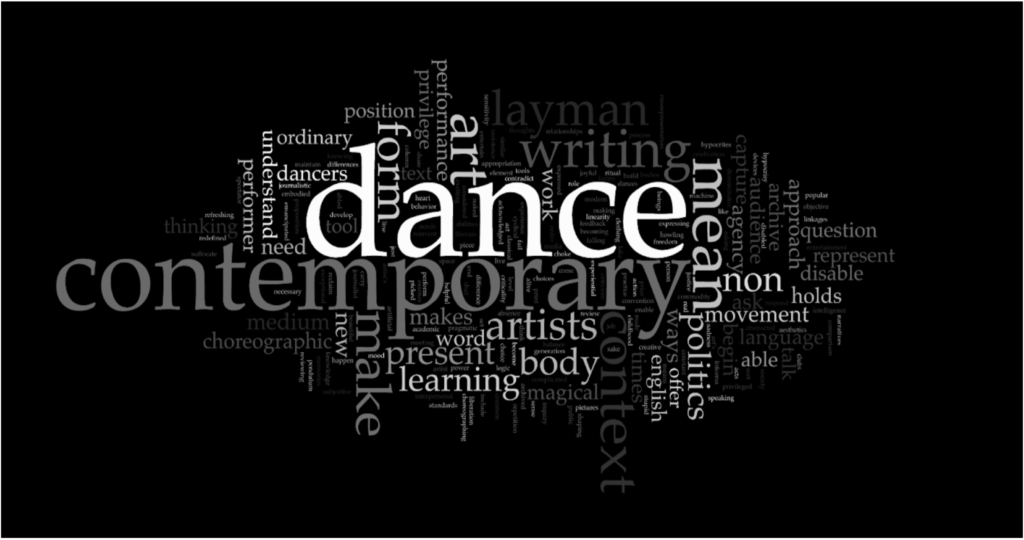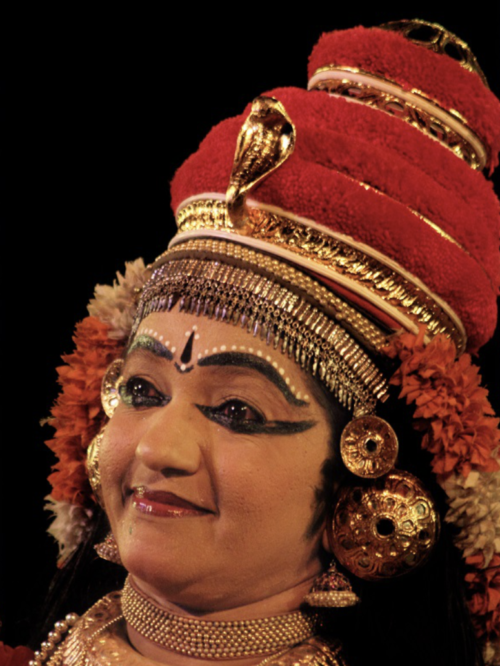101 QUESTIONS TO ASK WHILE WRITING ON DANCE.

- How to ask a question – to the dance, for the dance, by the dance ?
- Does the contemporary live in the ´now´, only?
- How can dance be viewed in the present, without the baggage of the past or as pre- condition of a future?
- What does a pragmatic approach do?
- What narratives of art does the print media build through their entertainment column?
- What is a journalistic approach to dance writing?
- How can a choreographer make choices of what they want to make visible?
- What values/sensitivity should one have/develop/ask while asking a question?
- Can the objective and subjective viewpoints ever be separated or vice versa?
- What is dance criticism?
- How does one maintain the balance between celebration and politics while writing on dance?
- What is an embodied experience?
- Do artists struggle to receive love and kill themselves by self loathing?
- Can ´exhaustion´ become a therapy for dancers?
- When does dance become a protest?
- What does thinking do?
- When does contemporary begin and end?
- What informs a sense of criticality?
- What is at the heart of reviewing dance?
- How can individual differences be acknowledged?
- Can the movement discover new meanings for/by/of the body?
- Does the word layman come with the politics and position one holds in society?
- What skills does a dancer need to become a good choreographer?
- Can the audience be layman?
- Does the space of inquiry liberate or suffocate?
- Who is an emancipated spectator?
- Where and how does a review begin?
- What does the prior understanding of aesthetics and logic do to the present viewing of dance?
- How can an artist make the audience think?
- What does absence mean?
- Do artists generally endure solitude?
- Why do we need a body in performance?
- What are experiential acts?
- Should there be an insistence on any work to make a difference?
- What is the job of a performer?
- What is ordinary?
- What does a movement have to do with a text?
- In order to understand the form of contemporary dance, is it truly necessary to understand the context of the artists?
- Do dancers need to devote enough time and attention to the art of money-making ?
- How can a choreography do justice to an artist’s context and its underlying politics?
- Do online platforms manipulate our experience of watching a performance?
- Do artists need constant validation to keep their practice alive?
- What is the role of feedback in a process?
- Is “Art for art’s sake” a medium for the privileged?
- Is layman a stupid person?
- What does context mean?
- Doesn’t the word ‘archive’ contradict the very essence of contemporary?
- Is writing and expressing about a ‘dance’ similar to what it means to perform a ‘dance’?
- What makes something contemporary and non-contemporary?
- Is contemporary dance becoming a new form of ‘form’, a convention in its own liberation?
- Can a dance be redefined as per modern times?
- Is there any power in being ordinary or non-exceptional?
- How can we reinvent ways of thinking and learning dance?
- How can learning dance become joyful?
- How can contemporary dance be archived?
- Who makes the choice about what needs to be archived?
- How can dance heal and repair?
- What does contemporary dance enable which classical forms of dance fail to do?
- What are abled and disabled bodies?
- Are we all able to disable or unable to enable in some sort?
- How to give due credits to the people involved in the work?
- When we talk about the body´s abilities, how can it be best described without comparison?
- How can a performer reclaim an ‘agency’?
- How does artificial intelligence or machine learning give new dimensions to contemporary choreography?
- How can the dance be taken out of the ‘form’?
- What is contemporary knowledge?
- What do interpersonal memories and relationships do to your dance?
- Is dance an act of privilege?
- Are dancers complicated beings?
- Do contemporary dancers represent a generation of sadness?
- Does popular clothing in dance represent the times and mood of art?
- What is the difference between habit and ritual?
- Does the unfamiliarity of language often choke you?
- Is sharing or responding in public a performance?
- Do English speaking artists clubs fake to show reality?
- Is knowing the English language itself a ‘privilege’?
- What does repetition offer as a choreographic tool?
- Does all the present behavior have linkages to childhood?
- How does appropriation happen?
- Can misrepresentation be beautiful and offer something magical?
- Should there be dances that we just shut up and watch?
- What is the least common denominator?
- How can howling be expressed within the body?
- What does ‘agency’ mean?
- What could be more refreshing than making the academic vocabulary creative?
- Which traces of a narrative should be picked, while writing on dance?
- What is cyclical or pendulum-like movement?
- How to entertain abstracted thoughts in dance?
- Is non-linearity in text an exciting proposition?
- What does freedom mean?
- Does all art carry some level of hypocrisy?
- Are artists hypocrites?
- Is art a medium or a commodity?
- Why could one piece of work be considered ‘art’ and the other not?
- What does the action of falling signify?
- Can writing talk back to you as a writer?
- What is the line between naked and nude?
- Does dance have its own philosophy of space and time?
- How much is too much while describing movement?
- Can the aging of a body be powerful?
- Can one write about dance through dance?
These questions have been collated in the Writing on Dance Lab as part of AIB 2022 from several conversations with the fellow artists and with myself. As a dance practitioner, it excites me to think about things in questions. The intent was not to find answers necessarily but curiously engage with what is known-unknown through the body. This document has continued to serve as an active thinking space and companion while I was attempting to write on dance. As sometimes when the process becomes difficult and lonely, we all need something to hold onto. To all the bugs who disrupt for the good, we are not alone in asking questions, especially the challenging ones.




